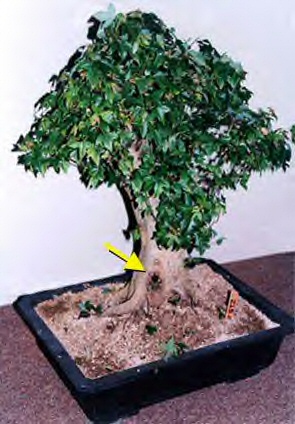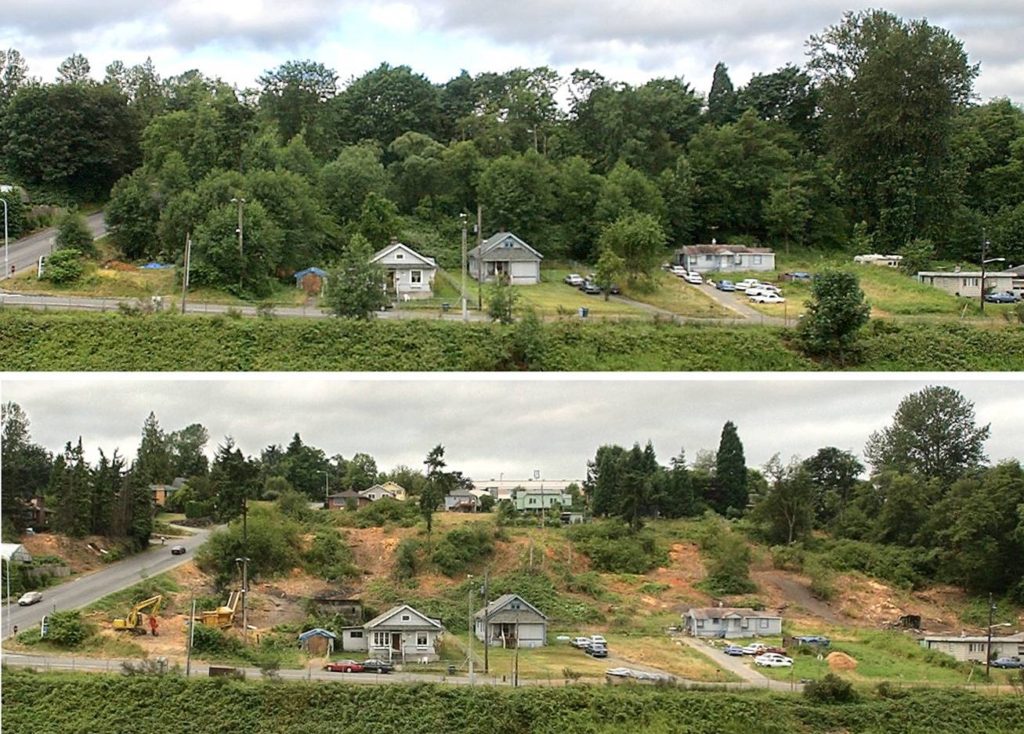
APHIS has released a risk assessment in response to a petition from the Republic of Korea (ROK) seeking permission to export to the United States bunjae of three maple species (Acer buergerianum Miq., A. palmatum Thunb., and A. pseudosieboldianum Nakai). The risk assessment is available here. Scroll down to the deadline February 3.
Comments are accepted until 3 February. To comment, send an email to PPQPRAcomments@aphis.usda.gov. Include the name of the commodity assessed by the draft document (e.g., Korean maple bunjae) in the Subject line.
“Bunjae” is the Korean term for plants for planting equivalent to Japanese “bonsai” or Chinese “penjing”. In this practice, trees are grown – often for years – using cultivation techniques such as pruning, root reduction, potting, defoliation, and grafting, to produce miniature specimens.
Importation of bunjae plants for planting in the Acer genus from several Asian countries was prohibited temporarily under the agency’s authority under the Plant Protection Act and regulations in 7 CFR 319.37, Subpart H- P4P to limit imports of a new suite of plant taxa as “not authorized pending pest risk analysis” (NAPPRA).
The NAPPRA listing, finalized in 2013, followed numerous detections of Anoplophora and possibly other pests in penjing shipped from China to the United States, and one outbreak (in Takohma, Washington) that required expensive and destructive eradication measures. At that time, APHIS made the case that no effective mitigation existed to provide protection adequate to the risk. If APHIS is to agree to the ROK petition, it must demonstrate that any mitigation measures it accepts have overcome deficiencies identified in the original proposal to include Acer in the NAPPRA category.
APHIS will address risk management aspects, including and risk mitigation measures, after it has assessed stakeholder and country comments on each pest list or risk assessment. There will be an opportunity to comment on any proposed mitigation measures later.
The risk assessment now open for comment clearly demonstrates that the risks are severe. It concludes that 17 or 18 taxa or groups of species pose a “high” overall risk of introduction, establishment, and impacts. Another 10 pose an overall “moderate” risk. In each case, the risk assessors concluded that the harvest and shipment procedures outlined in Section 1.4 of the Korean petition would not mitigate the risk.
While the risk is greatest for maples (Acer spp.), many other types of plants also host pests evaluated in the risk assessment. Thus, the risk often affects fruit trees and grapes as well as alders, birches, dogwoods, elms, magnolias, oaks, poplars, walnuts, willows, rhododendron, even redwood.
My questions and concerns
I note that Table 3 of the risk assessment omits the Asian longhorned beetle (Anoplophora glabripennis), even ‘tho the species is discussed in the text and received an overall risk ranking of “high”. Is this a mistake? If the omission is deliberate, why is the reasoning not discussed in the risk assessment?
The assessments included in this document are brief and leave out many easily obtainable facts regarding damage, especially with regard to the Anoplophora, Lymantria, and Lycorma genera. The risk assessment notes when pest species are polyphagous, but it is uncertain how it incorporates that heightened risk of potential damage.

reason: escape of A. chinensis from Chinese penjing plants
while they were in “post entry quarantine”
I am also concerned about the document’s treatment of uncertainty. First, “moderate uncertainty” is defined as “Additional or better evidence may or may not change rating.” How do the assessors evaluate this 50/50 tossup? My concern is heightened by a statement in the text regarding two taxa, Cacopsylla albopontis & C. pseudosieboldiani. The assessment notes an absence of literature documenting that these taxa are pests in their native range, so their ability to cause damage if introduced to the U.S. is unknown. Consequently, the assessors did not analyze them further “as they are unlikely to cause unacceptable impacts.” As we all know, numerous arthropods and pathogens highly damaging in naïve environments – including in the US — were not pests / were barely known in their native ranges.
Regarding individual species, I note that the assessment says the wood-root fungus Daedalea dickinsii is usually found in older heartwood of roots, trunks, or branches. The assessors conclude that it is unlikely that this fungus would be associated with maple seedlings. However, bunjae trees are not seedlings; they are deliberately miniaturized woody plants that are often years old.
Re: Anomala cuprea, the assessor seems to downplay the risk because the insect lacks a specific attraction to maples. While I agree that a generalist might be somewhat less likely to be on the bunjae when they are exported, a generalist might pose a threat to a wide range of woody plants if introduced. This higher level of possible impacts needs to be recognized in the assessment.
Several insect groups were excluded from further valuation despite being described as established in Korea and “only associated with Acer species”. Included in this group are several beetles, true bugs (including aphids and leafhoppers), and butterflies/moths (pp. 13-14 of the PRA). I found this language to be completely unclear. If the pests are in Korea and associated with maples, why were they not evaluated?
Posted by Faith Campbell
We welcome comments that supplement or correct factual information, suggest new approaches, or promote thoughtful consideration. We post comments that disagree with us — but not those we judge to be not civil or inflammatory.